By The Siberian Times reporter
10 June 2014
Unique Paleolithic prize for scientists, a jaw of an early human who 'feasted on woolly mammoth' - but may have been cannibalised.
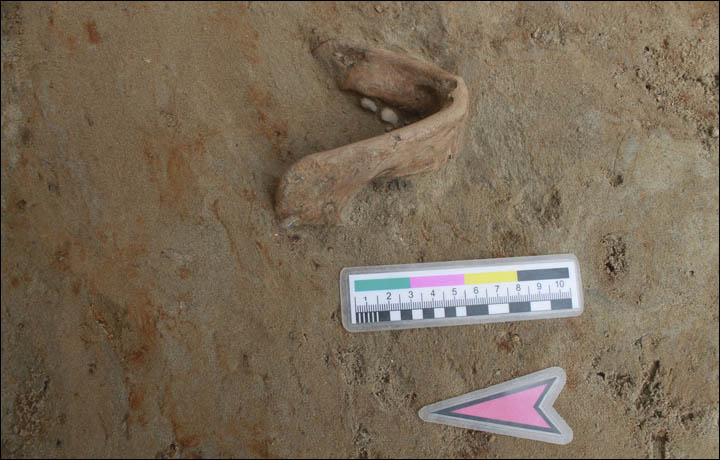
'This jaw is really unique because it is perfectly preserved. We can glean a lot of data: age, gender, race, even some diseases this person might have suffered from.' Picture: 'Krasnoyarsk Geoarheologiya'
Embedded in a hillside where it has lain for around 14,000 years, the adult jaw from Afontova mountain on the outskirts of Krasnoyarsk was found alongside the bones of animals and ancient tools.
Detailed DNA analysis, probably in Germany, will indicate to experts the age, gender, race (Caucasian or Mongoloid or a mix), and even possible diseases from ancient times.
Scientists will examine the jaw, which includes teeth, for evidence of ancient cannibalism, an initial suspicion which they cannot immediately confirm, but also for the possibility that mammoth meat was part of his diet.
These human remains did not lie in a grave but alongside the remnants of animals that were butchered, said research fellow Ivan Stasyuk. 'Why cannibalism? Because this jaw lies alongside weapons and chipped of bones of large ungulates,' he said, surmising that this human was slaughtered, and eaten, too.
'I would not jump to the conclusion of cannibalism,' countered his colleague Leonid Galuhin, also a research fellow at the company 'Krasnoyarsk Geoarheologiya', the deputy leader of excavation. 'For now the jaw has been taken to a Novosibirsk laboratory for all analyses, including trasological analysis, which will allow us to say for sure if there act of cannibalism or not.'
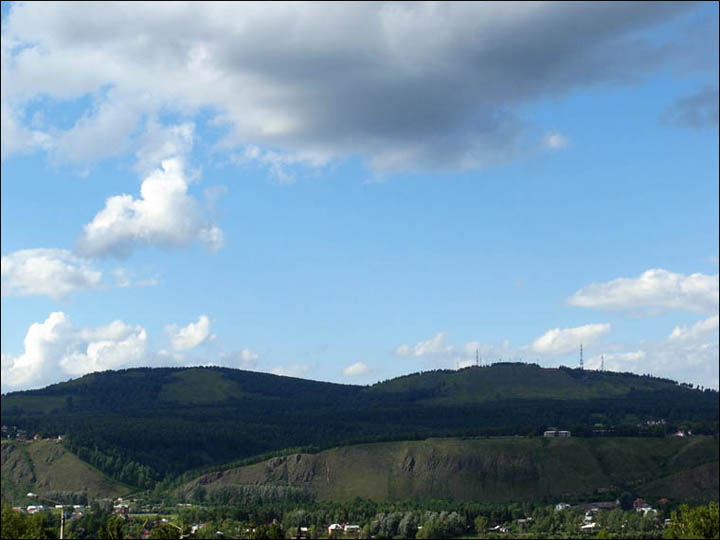

The current excavation covering 10,000 metres is being conducted because of the construction of a new bridge - the fourth - across the Yenisei River in Kransoyarsk. Pictures: Panoramio, Roman Maksimov
The jaw is likely to be sent to the world famous Max Plank laboratory in Germany for a full scale DNA analysis.
'Findings of the bones of Paleolithic man are very rare,' said Galuhin. 'There are not many such findings in the world. To us, these are extremely rare discoveries. This jaw is really unique because it is perfectly preserved. We can glean a lot of data: age, gender, race, even some diseases this person might have suffered from.
'And it can enable us to research early colonisation of Siberia by ancient humans, and the connections of Siberian inhabitants to other regions. Besides, the more anthropological material of this time we find all over the world, the more information we learn about ancient people. Previously in Siberia and the Far East were made single finds, the best material was from burials on our sites called Malta and Buret.'
'Still we had only the jaws of two children. Now we have a third one and in the best condition, with its teeth preserved. The teeth are important to extract DNA.'
'This site, an ancient camp, has been researched since the late 19th century and has given us a lot of material, not just debris, but thousands of complete stone and bone tools. During our current excavations we hope to find probably not the same amount, but very close to this. Apart from stone and bone tools, we found a set of stone beads and some pieces of art including a triangular plate made of mammoth tusk with plotted points. It was probably a pendant.'
The site is, in fact, a complex of ancient camps.
Afontova gora (mountain) 2 has two parts. One is an area where butchered animal carcasses have been found, along with tools for dissecting meat.
'So we see everything as it was left by the ancient people. The other part of this ancient camp is a slope, which was formed by landslides. It is hard to see any structure there, very hard to work. We must constantly consult with geologists and think how to work in the best way. This jaw was found here. We managed to date the jaw using other finds nearby. I think that after full analysis we will know the date for sure.'
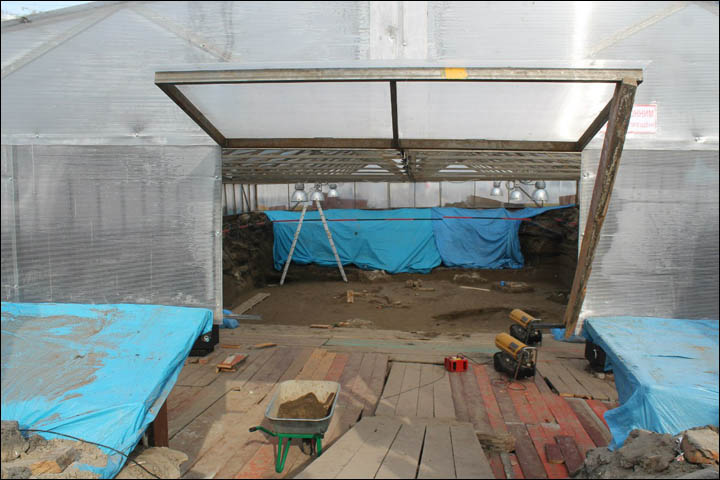
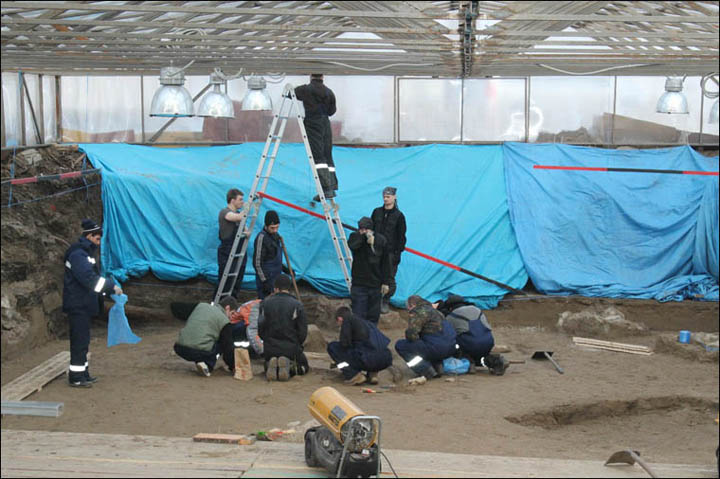
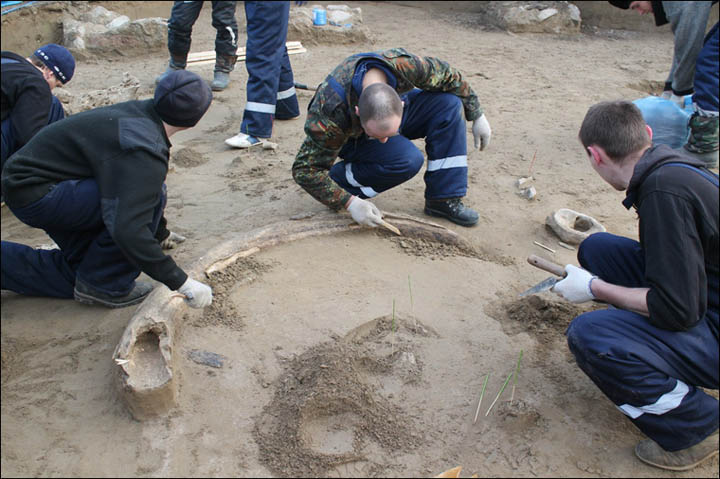
'In March, we found mammoth teeth here. It is a rather common finding for that period.' Pictures: 'Krasnoyarsk Geoarheologiya'
'In March, we found mammoth teeth here. It is a rather common finding for that period. You need to understand this epoch. People lived along the boundary of glaciers, in our case this border was on the line of modern day Turukhansk' - some 1,475 kilometres to the north of present day Krasnoyarsk at the confluence of the Yenisey and Nizhnyaya Tunguska Rivers.
'The area of modern Krasnoyarsk was like Arctic tundra,' said Mr Galuhin. 'There were a lot of animals near the boundary of the glacier, and ancient man followed the animals along the routes of their migration and explored new territories. Among these animals were the mammoths, too, so it goes without saying for Paleolithic archaeology that people hunted these creatures too.'
Mammoth meat was part of the diet of these Siberians, he is certain. 'The climate was quite severe here, akin to modern Taymyr, for example.'
The current excavation covering 10,000 metres is being conducted because of the construction of a new bridge - the fourth - across the Yenisei River in Kransoyarsk.
The main contractor is the Institute of Archaeology and Ethnography, of the Siberian Branch of the Russian Academy of Sciences. The company Krasnoyarsk Geoarheologiya Limited works alongside them.
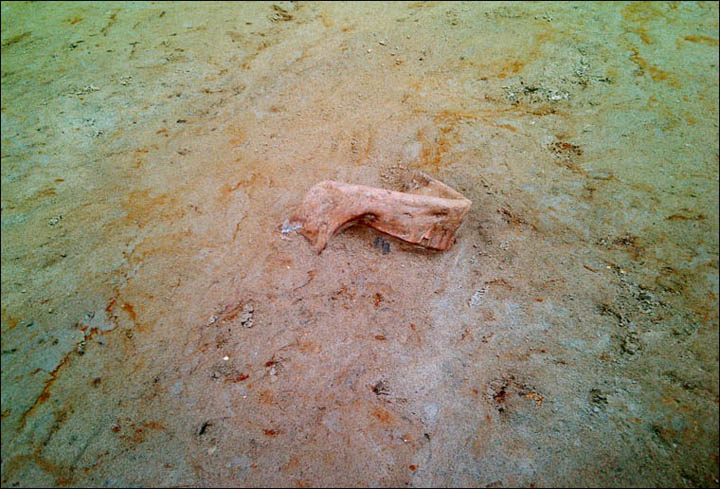
'For now the jaw has been taken to a Novosibirsk laboratory for all analyses, including trasological analysis, which will allow us to say for sure if there act of cannibalism or not.' Picture: Roman Maksimov
This 'rescue excavation' - expected to bring a wealth of new finds - may lead to the the creation of a special museum dedicated to this site, a long-held dream of archeologists.
The site is on the right bank of the river and over many years bone and antler tools as well as items of personal adornment have been recovered. Fauna remains include mammoth, reindeer, sheep, horse, aurochs/bison, ibex, saiga antelope, red deer, hares, arctic foxes and wolves.
No comments:
Post a Comment